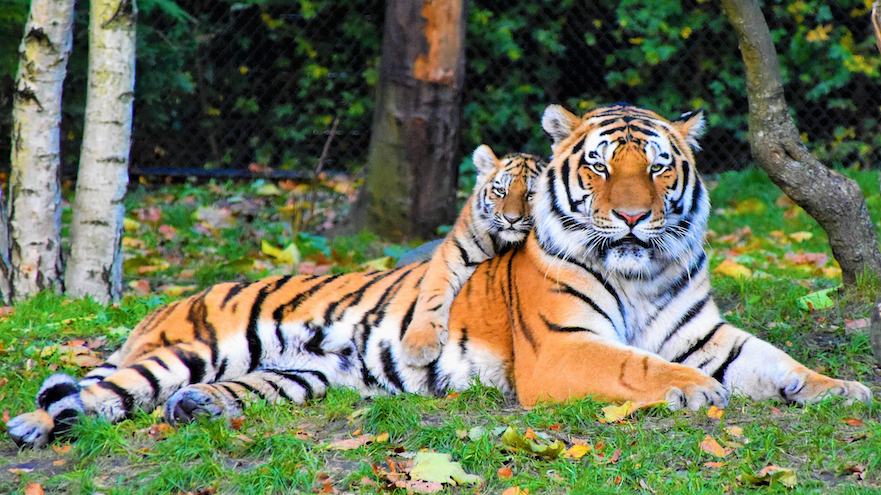
Wild tiger numbers 40% higher than thought, says conservation group
There are 40% more tigers in the wild than previously estimated, with as many as 5,578 around, although they are still endangered species, according to leading conservationist groups.
The leap in that amount is due to increased monitoring, with the population considered stable or increasing, said the International Union for Nature Conservation (IUCN). The habitat protection project shows that “recovery is possible”.
It is estimated that between 3,726 and 5,578 wild tigers – 40% more than the last assessment in 2015.
Wild cheetah in namibia
Wild cheetah to return to India for the first time since 1952
Read more
While the tiger remains threatened with extinction, population trends indicate that projects such as the IUCN integrated tiger habitat conservation program are successful and recovery is possible during conservation efforts to continue, “said the organization.
The main threats include the hunting of the Tiger itself, the hunt and hunting of its prey, and the destruction of habitat due to agriculture and human settlements.
Expanding and connecting protected areas, ensuring they are managed effectively, and work with local communities that live in and around tiger habitats, it is very important to protect species,” IUCN said.
The World Wildlife Fund also said that the number of wild tigers had begun to recover after a century of decline in the main habitat of India, Nepal, Bhutan, Russia and China.
Re -assessment of tiger numbers came when IUCN updated the “red list” of threatened species – the most comprehensive source of information in the world about the global conservation status of plants, animals and mushrooms, assesses the risk of their extinction.
The king butterflies who migrated are now classified as endangered species on the red list due to climate change and habitat destruction.
And all Sturgeon species that are still alive are now at risk of extinct due to dams and wild hunting.
Today’s red list updates highlight the fragility of natural wonders, such as the unique spectacle of butterflies -the king who migrated across thousands of kilometers,” said Director General of IUCN, Bruno Oberle.
To preserve the diversity of rich nature, we need an area that is effective, quite regulated, protected and preserved, in addition to determining actions to overcome climate change and restore ecosystems.”
A private tiger child leads
More tigers live in our yard than in the wild. Is this a disaster?
Read more
This list assigns species to one of eight threat categories. A total of 147,517 was assessed in the latest version, with 41,459 species that were considered to be threatened with extinction.
From them, 9,065 was very threatened with extinction, 16,094 threatened with extinction and 16,300 was considered vulnerable.
Founded in 1964, this list counted 902 species that are now extinct, and 82 which are extinct in the wild.
Migratory Monarch Butterfly, a king subspecies, is famous for its migration from Mexico and California to summer breeding areas throughout the United States and Canada. The original population has shrunk between 22% and 72% over the past decade, said IUCN, with logging and deforestation has destroyed substantial areas of their winter shelters.
Meanwhile, pesticides and herbicides used in intensive agriculture killed butterflies and Milkweed – the host planted their larvae to eat.
Climate change is also a threat that grows fast, with drought, forest fires, extreme temperatures and bad weather that have a significant impact.
It’s hard to watch the king’s butterflies and their extraordinary migration on the edge of the collapse, but there are signs of hope,” said Anna Walker, who led the king’s assessment.
From planting original milkweed and reducing the use of pesticides to support the protection of winter sites and contribute to community science, we all have a role to ensure that this iconic insect makes full recovery.”
The Western population has the largest risk of extinction, said IUCN, after decreasing around 99.9%, from as many as 10m to 1,914 butterflies between the 1980s and 2021.
The larger Eastern population also shrank 84% between 1996 and 2014.
Concerns remain, whether enough butterflies survive to maintain the population and prevent extinction,” said IUCN.
Sturgeon Global’s re -assessment found that all 26 Sturgeon species remaining are now at risk of extinct, up from 85% in 2009.
Their decline during the last three generations was steeper than previously expected.
Sturgeon Yangtze has switched from endangered to extinction in the wild, while 17 species are now threatened with extinction.
Re -assessment confirms the extinction of Chinese rowing.
“Sturgeon has been tamed for their flesh and caviar for centuries,” said Iucn.







